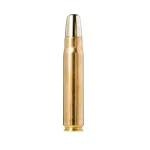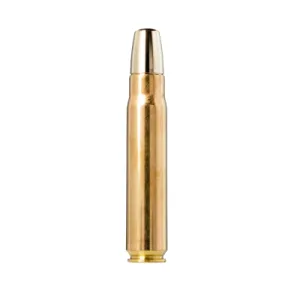
The .500 Jeffery is a big-game rifle cartridge that first appeared around 1920, and was originally introduced by the August Schuler Company, a German firm, under the European designation "12,7x70 mm Schuler" or ".500 Schuler". It was renamed the .500 Jeffery so as to be more palatable to British hunters and sportsmen following World War One. When introduced the .500 Jeffery was the most powerful rifle cartridge in existence and remained so prior to World War II. The 505 Gibbs, introduced prior to it in 1911, has only recently been loaded to higher modern pressures, although still below, hence remaining less powerful.
When the .500 Jeffery was first introduced it was loaded to a velocity of 2,350 feet per second (720 m/s) topped off with a 535-grain bullet generating 6,560 ft·lbf (8,890 J) of muzzle energy, which makes it a pretty good hunting caliber generally where thick-skinned dangerous game occurs. Since then, reloading capabilities have advanced, being able to launch heavier bullets at higher velocities. Now with modern reloads, the .500 Jeffery can launch a 600-grain bullet at a muzzle velocity ranging from about 2,450 to 2,500 ft/s (750 to 760 m/s). max. generating 7,995 ft·lbf (10,840 J) to 8,100 ft·lbf (11,000 J). With the newer reloads, this made the .500 Jeffery the most powerful production cartridge in the world until the introduction of the .460 Weatherby Magnum.
The .500 Jeffery has had a few issues since its introduction. It has a rather short neck length that can make it difficult to seat bullets with a large sectional density. Also, it has a small shoulder. This is not usually an issue but since the .500 Jeffery also has a rebated rim, it makes it rather difficult to extract in extreme conditions. But like the 505 Gibbs, the .500 Jeffery is also still enjoying somewhat of a renaissance among American shooters and African Big Game hunters in the early 21st century, almost 100 years after their introduction. It’s known to be used on large games like elephants.





